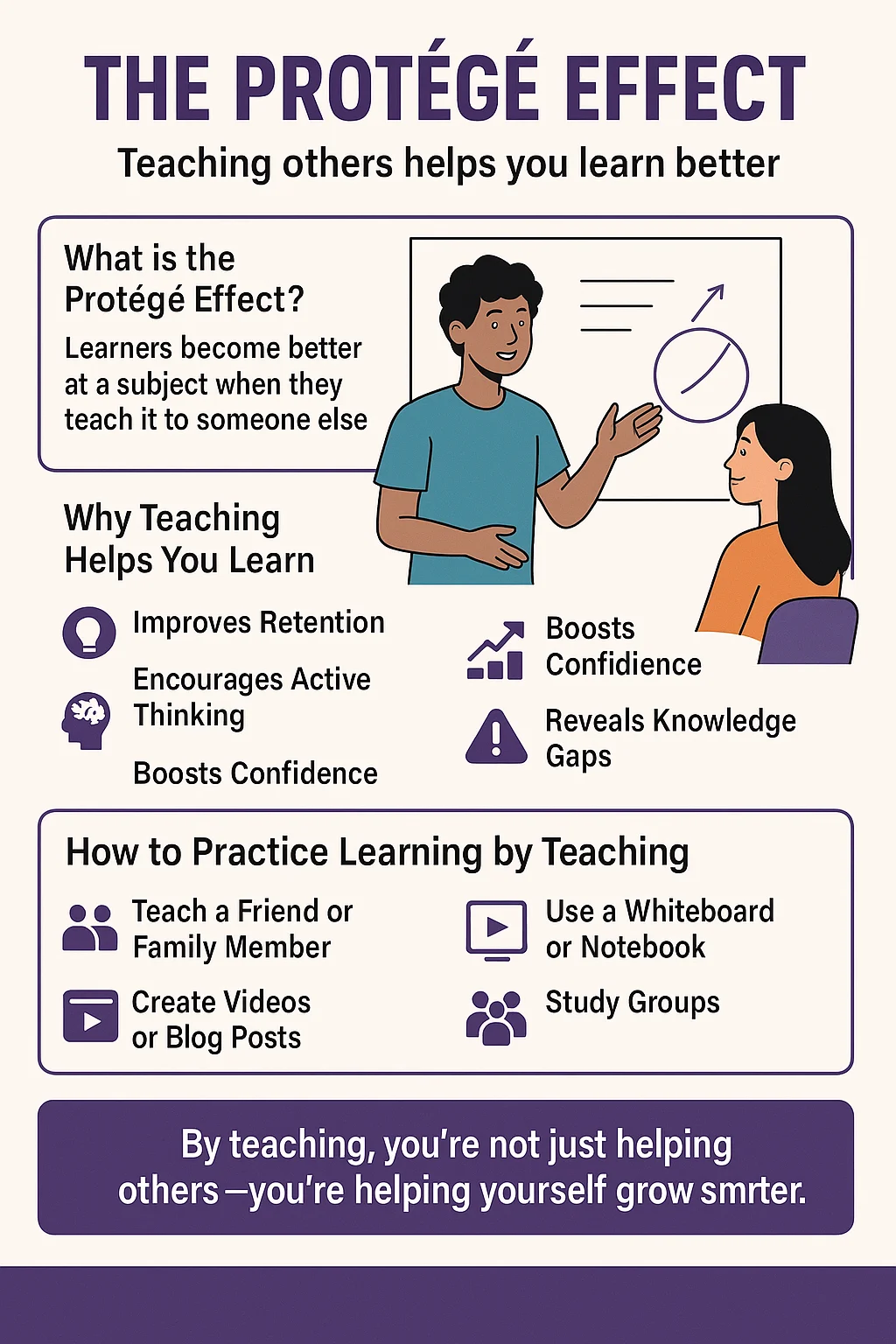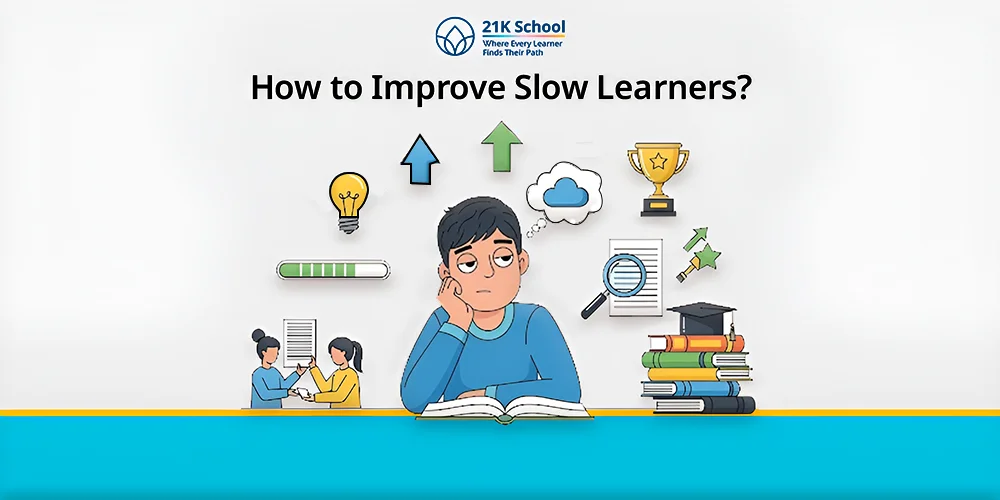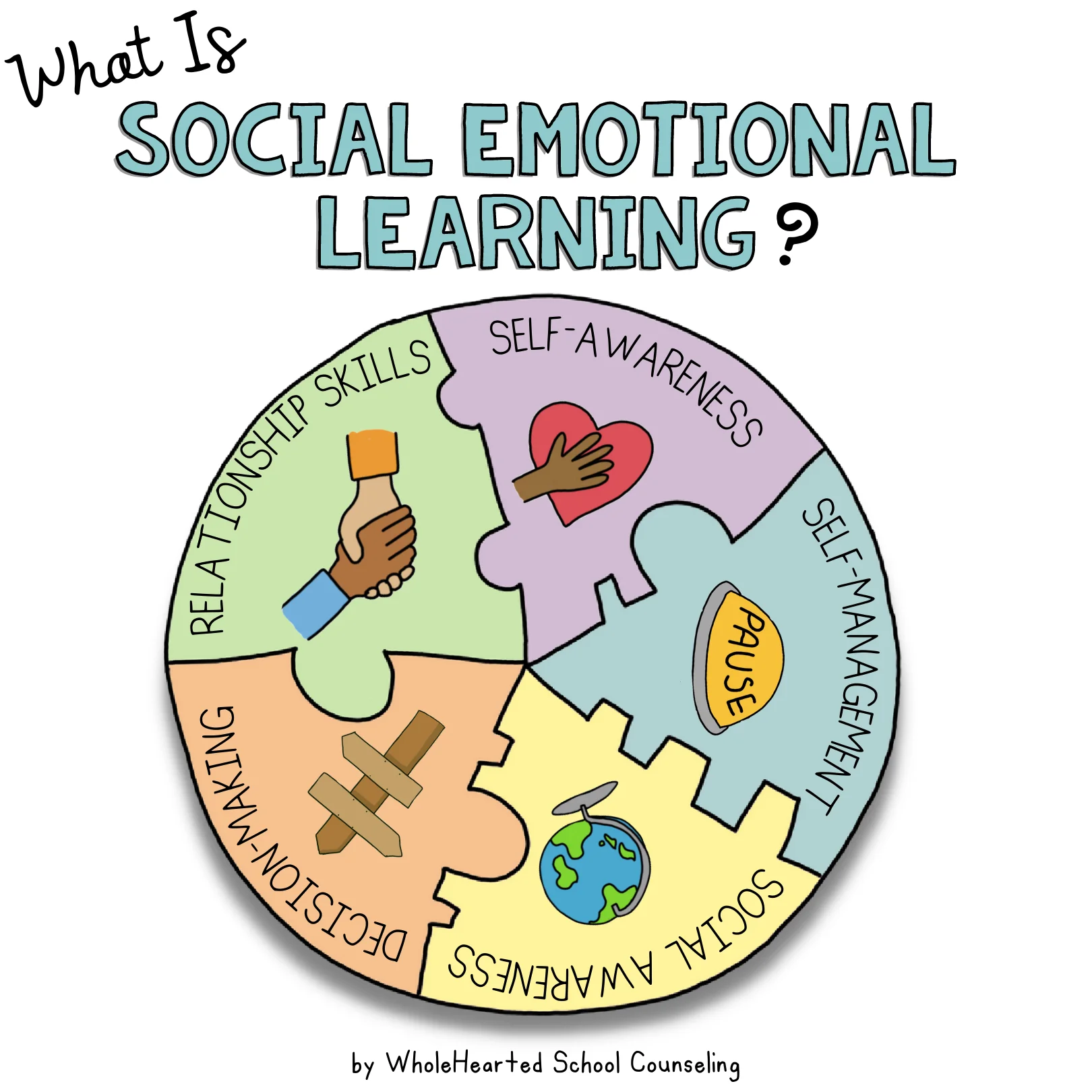Have you ever noticed that when you teach someone something, you understand it better yourself? This isn’t just a coincidence — it’s a powerful learning strategy known as the “protégé effect”. In simple terms, teaching someone else helps you learn faster, retain more information, and think more critically.
What is the Protégé Effect?
The protégé effect is the phenomenon where learners become better at a subject when they are required to teach it to others. It works because teaching forces you to:
Organize your thoughts clearly
Identify gaps in your understanding
Anticipate questions and challenges
This is why some of the best ways to prepare for exams or master new skills involve explaining concepts out loud, discussing them with friends, or even writing tutorials.
Why Teaching Helps You Learn
Improves Retention
When you explain an idea to someone else, your brain encodes it more deeply. Instead of just memorizing facts, you understand the “why” and “how,” which makes it easier to remember.
Encourages Active Thinking
Teaching requires you to think critically about the subject. You can’t just repeat information — you must analyze, summarize, and simplify, which strengthens your cognitive skills.
Boosts Confidence
Explaining knowledge to others builds self-assurance. The more you teach, the more confident you feel about your own mastery of the topic.
Reveals Knowledge Gaps
While teaching, you may stumble on questions you can’t answer. This highlights areas you need to review, helping you learn more effectively.
How to Practice Learning by Teaching
Even if you don’t have a formal classroom, you can still use this technique:
Teach a Friend or Family Member: Explain concepts from school, work, or hobbies.
Use a Whiteboard or Notebook: Pretend you’re a teacher and write out lessons.
Create Videos or Blog Posts: Making content for others forces you to structure your knowledge clearly.
Study Groups: Take turns teaching different sections to your group.
Real-World Examples
Students: Many successful students teach peers in study groups, improving their grades and understanding.
Professionals: In workplaces, explaining processes to colleagues not only helps the team but also reinforces the employee’s own expertise.
Online Learning: YouTubers and bloggers who teach complex skills (like coding, cooking, or languages) often report learning even more while creating content.
Key Takeaway
Learning by teaching isn’t just helpful — it’s powerful. It turns passive learners into active thinkers, improves memory, and develops confidence. Next time you’re studying, try explaining what you’ve learned to someone else — even if it’s just a friend, family member, or an imaginary audience.
By teaching, you’re not just helping others — you’re helping yourself grow smarter.
Call to Action:
Try the protégé effect today! Pick a topic you’re learning, explain it to someone, and see how much more you understand. Share your experience in the comments or on social media to inspire others to learn smarter, not harder.







hga